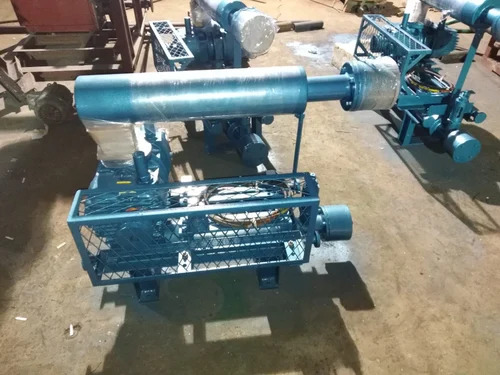Air Cooled Root Blower
60000 INR/Piece
Product Details:
- Color Sliver
- Theory Vacuum Pump
- Usage Industrial
- Material Mild Steel
- Power Electric Watt (w)
- Pressure Medium Pressure
- Application Submersible
- Click to View more
X
Air Cooled Root Blower Price And Quantity
- 60000 INR/Piece
- 1 Piece
Air Cooled Root Blower Product Specifications
- Industrial
- Vacuum Pump
- Electric Watt (w)
- Sliver
- Submersible
- Mild Steel
- Medium Pressure
Air Cooled Root Blower Trade Information
- 10 Piece Per Day
- 1 Days
Product Description
An Air Cooled Root Blower is a type of roots blower that uses air as a cooling medium for dissipating heat generated during operation. It consists of two interlocking rotors within a housing, creating pockets of air that are carried from the inlet to the outlet side. The air cooled design eliminates the need for additional cooling systems such as water cooling, simplifying maintenance and installation. This type of blower is reliable, compact, and suitable for applications that require continuous airflow or gas circulation. It finds application in several industries, including aeration, pneumatic conveying, biogas production and wastewater treatment. The air cooled root blower provides efficient performance while ensuring reliable operation and cooling.
Air Cooled Root Blower Features:
- Air Cooling
- Compact Design
- Efficient Heat Dissipation
- Reliable Operation
- Versatile Applications
- Low Maintenance
- Cost-effective
- Suitable for Various Environments
- Noise and Vibration Control
Air Cooled Root Blower Benefits:
- It eliminates the need for additional cooling systems, like water cooling, leading to cost savings in terms of installation, equipment, and maintenance.
- It is suitable for installations with limited space.
- Its robust construction ensures reliable performance in demanding industrial environments.
- Regular inspection and cleaning of cooling fins are typically sufficient to maintain optimal performance.
FAQs about Air Cooled Root Blower:
Q: What is an air cooled root blower?
A: An air- cooled root blower is a type of roots blower that uses ambient air as a cooling medium to dissipate heat generated during operation. It is designed with cooling fins or external surfaces that promote heat transfer from the internal components of the blower to the surrounding air, eliminating the need for additional cooling systems such as water cooling.
Q: How does an air cooled root blower work?
A: An air cooled root blower functions on the principle of positive displacement. It consists of two interlocking rotors with lobes that rotate in opposite directions within a housing. As the rotors rotate, they create pockets of air that are carried from the blower's inlet to the outlet side. During operation, the cooling fins or external surfaces of the blower allow air to flow across them, absorbing heat and dissipating it to the surrounding environment.
Q: What are the advantages of using an air-cooled root blower?
A: Air cooled root blowers offer several advantages, including:
- Simplicity
- Cost-effectiveness
- Versatility
- Compact design
- Reliability
Q: What applications are suitable for air cooled root blowers?
A: Air cooled root blowers are suitable for applications that require continuous airflow or gas circulation, such as:
- Pneumatic conveying systems
- Aeration processes
- Biogas production
- Industrial processes
Q: Are there any limitations to consider when using an air-cooled root blower?
A: Yes, there are a few considerations including:
- Cooling capacity
- Noise and vibration
- Operating environment
Q: How do I select the right air cooled root blower for my application?
A: When selecting an air cooled root blower, it is important to consider factors such as required airflow, gas composition, temperature conditions, pressure requirements, and specific application constraints.
Tell us about your requirement

Price:
Quantity
Select Unit
- 50
- 100
- 200
- 250
- 500
- 1000+
Additional detail
Mobile number
Email









 Call Me Free
Call Me Free
